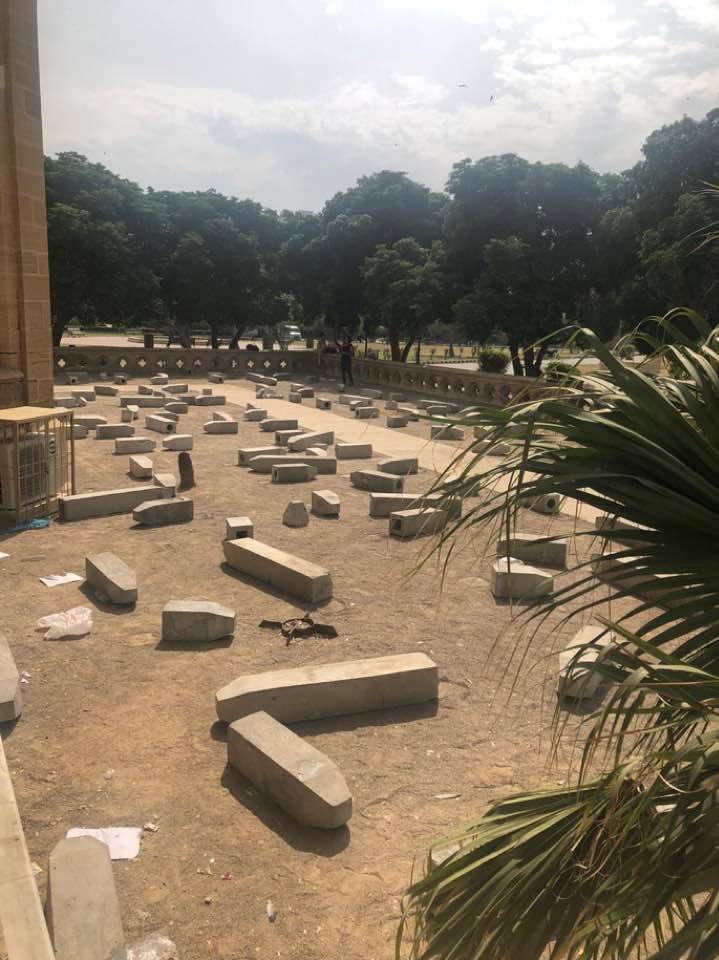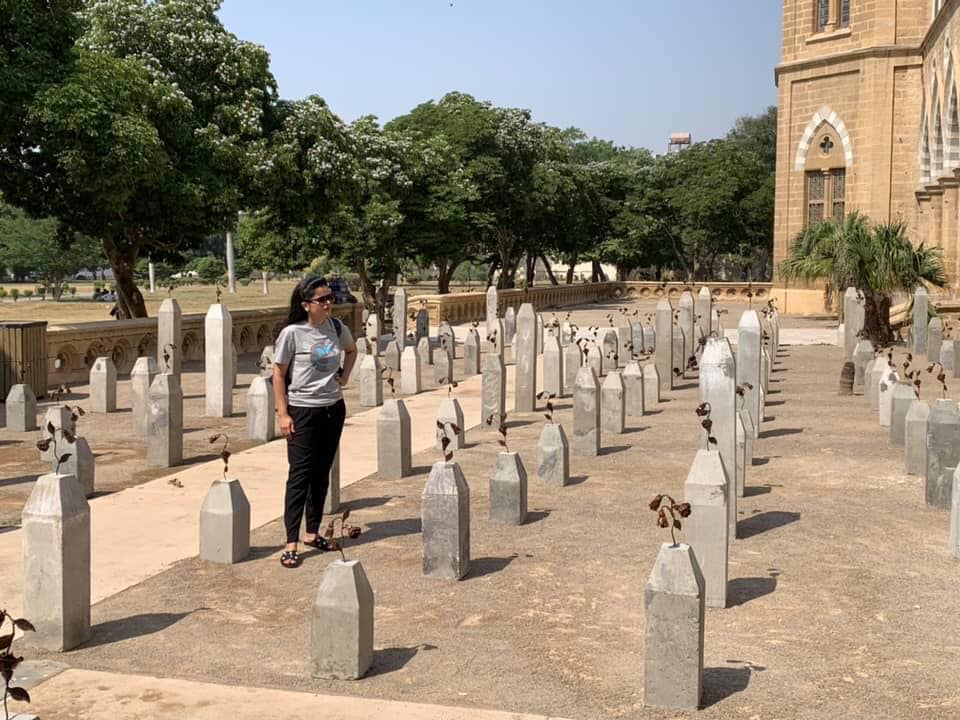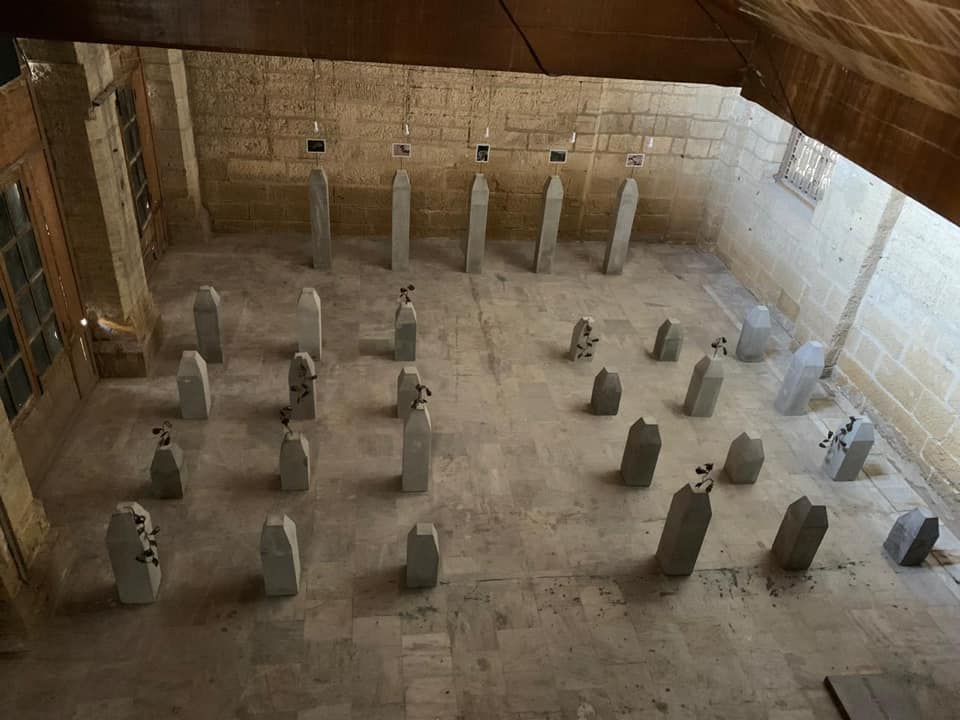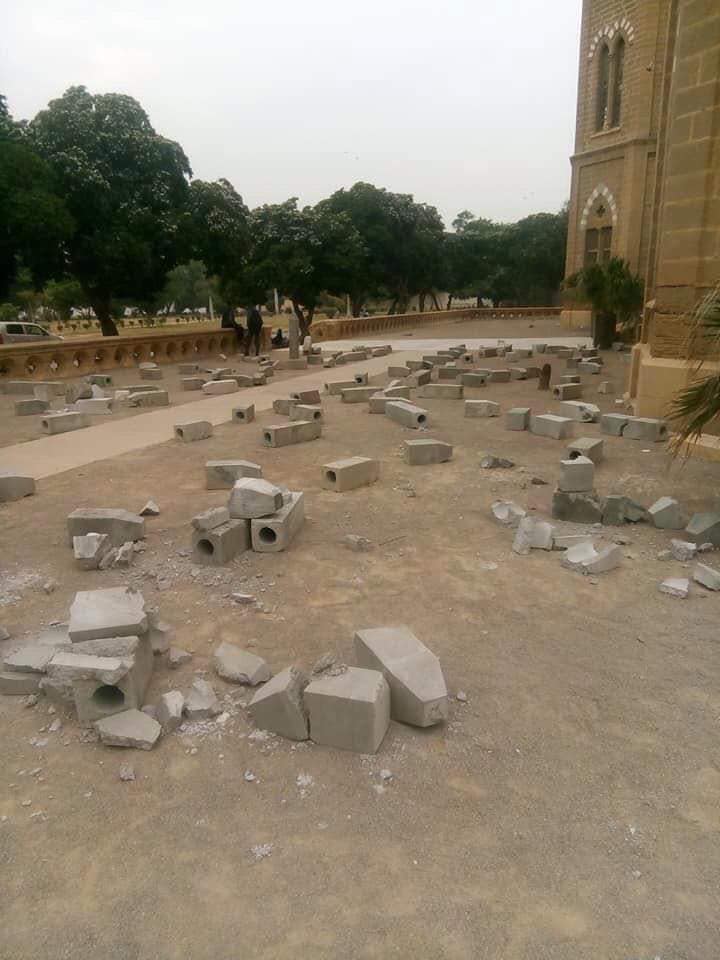
[A few days ago, artist Adeela Suleman’s art installation, ‘Karachi’s Killing Fields,’ which remembered the 444 people murdered by infamous Police officer Rao Anwar, was sealed and removed by LEAs at Frere Hall, Karachi. The installation also featured a video of Naqeebullah Mehsud's father and graves of people who were brutally killed in the name of 'peace'. We are republishing a short note by artist Bani Abidi here. Eds.]
 The removal of Adeela Suleman's ‘The Killing Fields of Karachi’ - displayed at Free Hall as part of the Karachi Biennale - will become a greater part of public memory than the artwork would have had the fortune of becoming.
The removal of Adeela Suleman's ‘The Killing Fields of Karachi’ - displayed at Free Hall as part of the Karachi Biennale - will become a greater part of public memory than the artwork would have had the fortune of becoming.
https://youtu.be/dfwS0ts0AGs
Hence, awful though this violation has been and a shame for Adeela who put in all the effort to make and install this work, this event has done a huge service to the question of censorship, public engagement, the threatened establishment and the potential of art to disrupt silence.

This is a process of growing, of negotiating the challenges inherent in partnering with the State and with public space. In a society in which contemporary arts have been produced and consumed privately, indoors, and primarily by a privileged class (much like English press), this appearance of art on the public stage in recent years, is fraught and important and took a long time coming.
https://twitter.com/nidkirm/status/1189081018747293696
And to be honest, it can still be quite class blind and patronising. It is only recently that curators even woke up to creating signage in Urdu at art exhibits.
https://twitter.com/salmanAraja/status/1188799462849892352
The question of engaging with a politicised and invested Karachi public holds in it a power and potential, that is far beyond what it meant to just look at art behind closed doors while munching on samosas, which is what we are best at. If the whole city is participating, many more challenges will come to the fore.
 Life is not a frolic in the park for most Karachiites, who live with a range of fears, negotiations and deprivations, so... welcome to the party. Congratulations Adeela for having unwittingly started this conversation!
Life is not a frolic in the park for most Karachiites, who live with a range of fears, negotiations and deprivations, so... welcome to the party. Congratulations Adeela for having unwittingly started this conversation!
Hopefully along with the memory of this moment, the memory of the 444 dead honoured in this work, will also proliferate.
(Photographs courtesy Nida Kirmani).
 The removal of Adeela Suleman's ‘The Killing Fields of Karachi’ - displayed at Free Hall as part of the Karachi Biennale - will become a greater part of public memory than the artwork would have had the fortune of becoming.
The removal of Adeela Suleman's ‘The Killing Fields of Karachi’ - displayed at Free Hall as part of the Karachi Biennale - will become a greater part of public memory than the artwork would have had the fortune of becoming.https://youtu.be/dfwS0ts0AGs
Hence, awful though this violation has been and a shame for Adeela who put in all the effort to make and install this work, this event has done a huge service to the question of censorship, public engagement, the threatened establishment and the potential of art to disrupt silence.

This is a process of growing, of negotiating the challenges inherent in partnering with the State and with public space. In a society in which contemporary arts have been produced and consumed privately, indoors, and primarily by a privileged class (much like English press), this appearance of art on the public stage in recent years, is fraught and important and took a long time coming.
https://twitter.com/nidkirm/status/1189081018747293696
And to be honest, it can still be quite class blind and patronising. It is only recently that curators even woke up to creating signage in Urdu at art exhibits.
https://twitter.com/salmanAraja/status/1188799462849892352
The question of engaging with a politicised and invested Karachi public holds in it a power and potential, that is far beyond what it meant to just look at art behind closed doors while munching on samosas, which is what we are best at. If the whole city is participating, many more challenges will come to the fore.
 Life is not a frolic in the park for most Karachiites, who live with a range of fears, negotiations and deprivations, so... welcome to the party. Congratulations Adeela for having unwittingly started this conversation!
Life is not a frolic in the park for most Karachiites, who live with a range of fears, negotiations and deprivations, so... welcome to the party. Congratulations Adeela for having unwittingly started this conversation! Hopefully along with the memory of this moment, the memory of the 444 dead honoured in this work, will also proliferate.
(Photographs courtesy Nida Kirmani).
